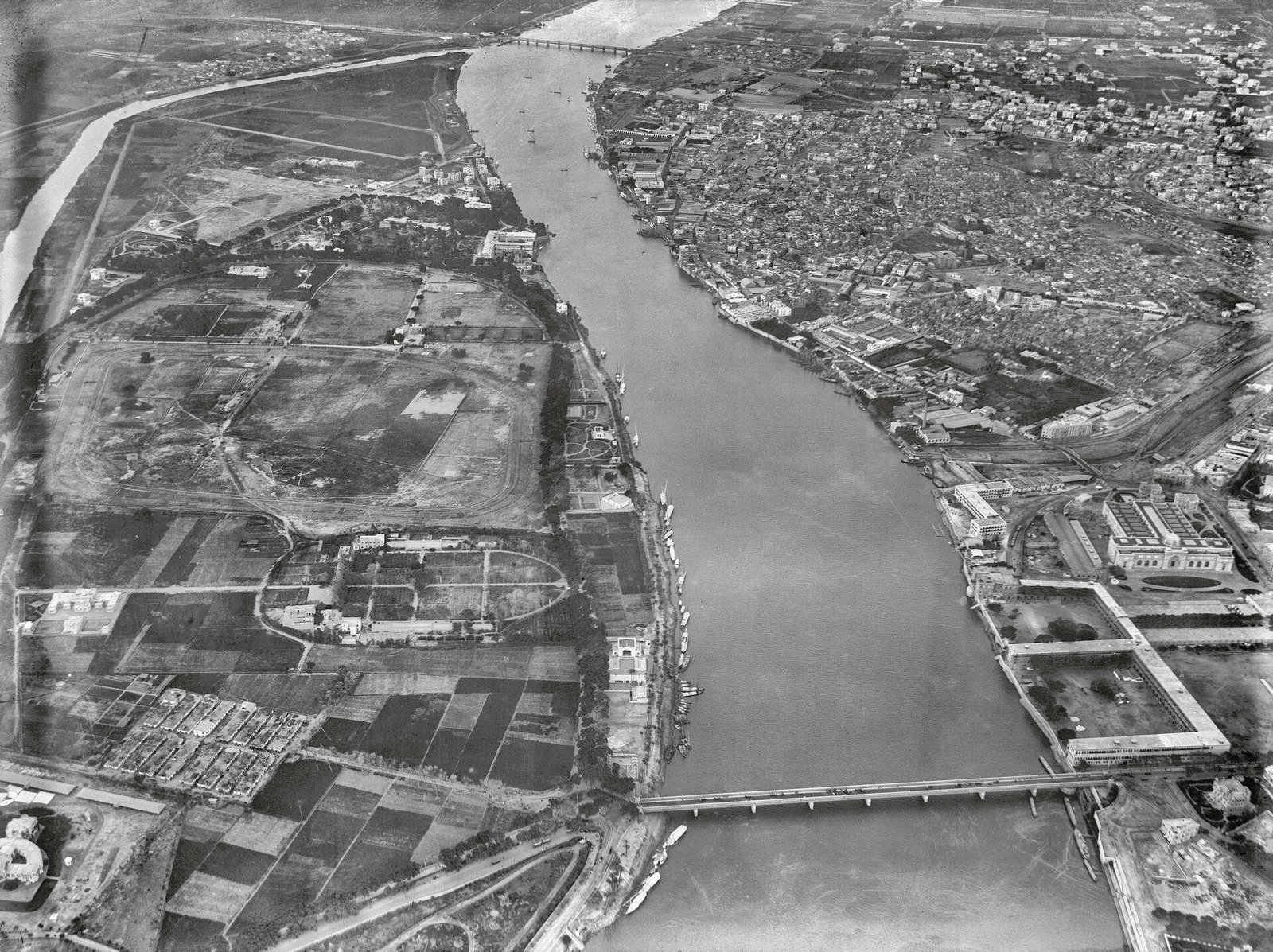Nestled in the heart of Cairo’s bustling Tahrir Square, the Egyptian Museum stands as a monumental testament to Egypt’s illustrious ancient past. Since its inauguration in 1902, this iconic institution has served as a cornerstone of Egyptology, offering an unparalleled glimpse into the civilization that shaped much of the ancient world.
A Historical Landmark
 View of the façade of the Egyptian Museum from the garden. The open arcades, in which objects were displayed, were later closed. Ref. AEMC 2149
View of the façade of the Egyptian Museum from the garden. The open arcades, in which objects were displayed, were later closed. Ref. AEMC 2149Designed by the French architect Marcel Dourgnon, the Egyptian Museum’s neoclassical architecture reflects the grandeur of ancient Egyptian art and architecture while embracing early 20th-century design principles. The museum’s distinctive pink hue, derived from red sandstone, and its ornate detailing make it a visually striking landmark against the backdrop of Cairo’s modern urban landscape.
The museum was established under the patronage of Egypt’s then-Khedive Abbas II, who envisioned a repository for the country’s vast collection of antiquities. Over the decades, the museum has grown into one of the world’s most significant collections of ancient Egyptian artifacts, playing a crucial role in the study and preservation of Egypt’s historical legacy.
The Egyptian Museum’s Impressive Collection

The Egyptian Museum’s collection is nothing short of extraordinary. Housing over 120,000 items, the museum offers an extensive overview of Egyptian history, from the earliest dynastic periods through the Greco-Roman era. Among its most renowned exhibits is the treasure trove from the tomb of Tutankhamun, including the iconic gold mask, which has captivated the imaginations of millions worldwide.
In addition to Tutankhamun’s treasures, the museum boasts a diverse array of artifacts, including monumental statues, intricate jewelry, mummies, and papyri. Each exhibit provides valuable insights into the daily life, religious practices, and artistic achievements of ancient Egyptians. The museum’s galleries are meticulously arranged to guide visitors through the different periods of Egyptian history, highlighting the evolution of art and culture over millennia.
A Hub of Research and Scholarship

Beyond its role as a public museum, the Egyptian Museum is a pivotal center for research and scholarship. It has long been a hub for Egyptologists and archaeologists from around the globe, offering access to its extensive archives and collections for study and research. The museum has been instrumental in numerous archaeological discoveries and ongoing research projects, contributing significantly to the field of Egyptology.
The museum also serves as a resource for scholars and students, hosting lectures, conferences, and educational programs. Its library and research facilities provide essential support for academic work and foster a deeper understanding of ancient Egyptian civilization.
Challenges and Future Prospects

While the Egyptian Museum in Tahrir Square has served as a beacon of Egypt’s cultural heritage, it has faced challenges. Issues such as space, preservation, and security have been concerns. These challenges arise due to the sheer volume and significance of the artifacts housed within its walls.
Additionally, the recent opening of the Grand Egyptian Museum (GEM) on the Giza Plateau marks a new chapter. The GEM is set to become the primary home for Egypt’s ancient artifacts, including many from the Egyptian Museum. Consequently, the Tahrir Square museum will likely undergo renovations and reorganisation. This process will help it focus on specific aspects of Egyptian history.
Cultural and Educational Impact of the Egyptian Museum

The Egyptian Museum plays a vital role in Egypt’s cultural and educational landscape. Furthermore, it remains a popular destination for tourists. It also symbolizes Egypt’s deep connection to its ancient past. For many visitors, the museum provides a rare opportunity to engage with artifacts that have shaped human history.
In addition, the museum’s commitment to education and public engagement helps cultivate a broader appreciation for Egypt’s cultural heritage. Through its exhibits and programs, it inspires a new generation to explore and value the richness of ancient Egyptian civilization.
Conclusion
The Egyptian Museum in Tahrir Square serves as a monumental repository of Egypt’s ancient history. Additionally, it symbolizes the nation’s enduring legacy. Its remarkable collection and historical significance highlight its status as a premier museum for ancient Egyptian civilization. As the museum adapts and evolves, it remains a vital cultural treasure. Moreover, it offers invaluable insights into the wonders of Egypt’s past.
At Odysseys Voyage, we offer a variety of packages that include visits to this iconic museum. Discover more here.




